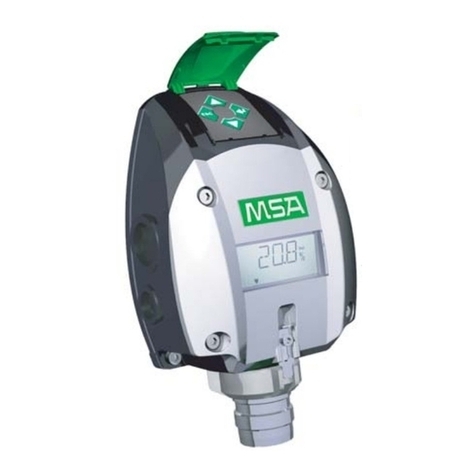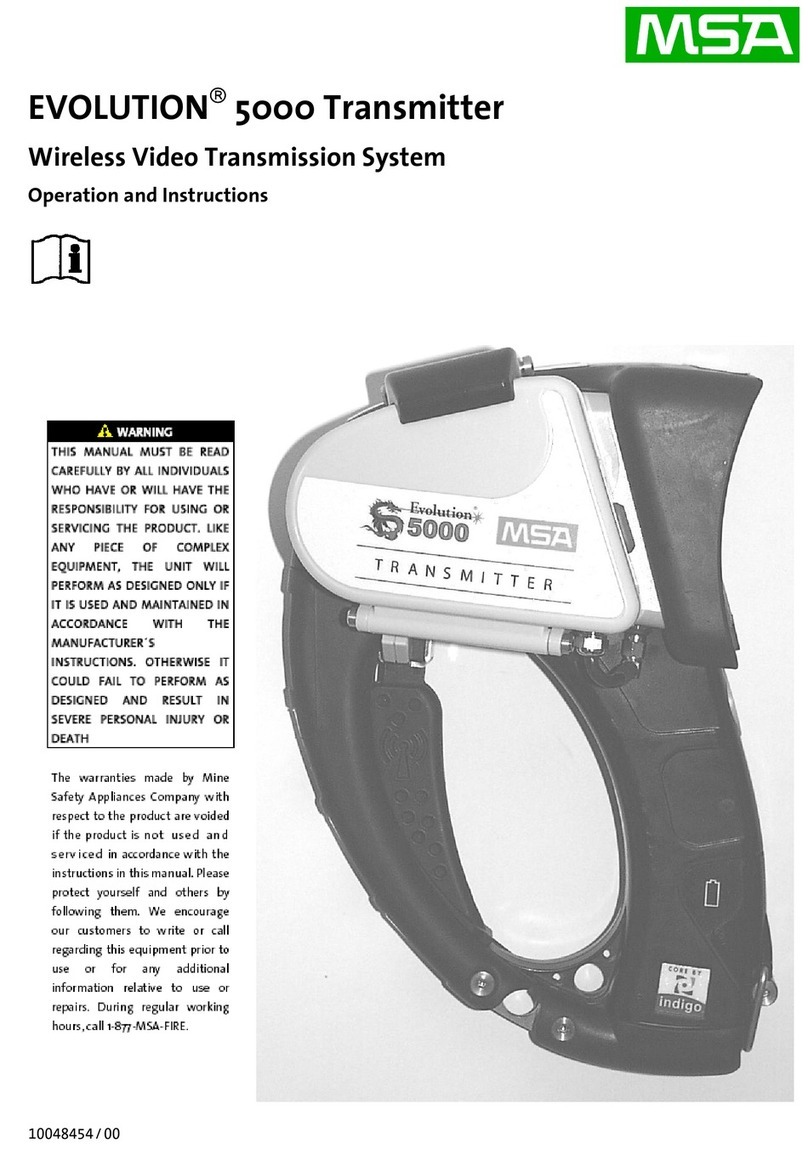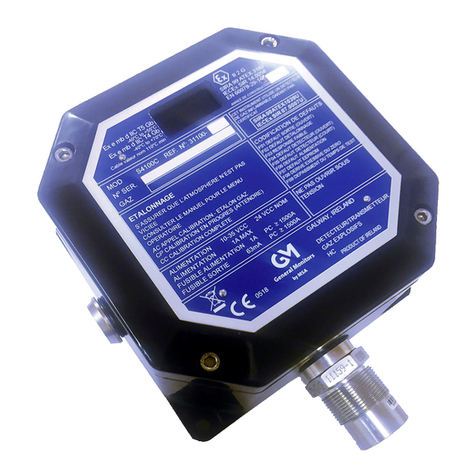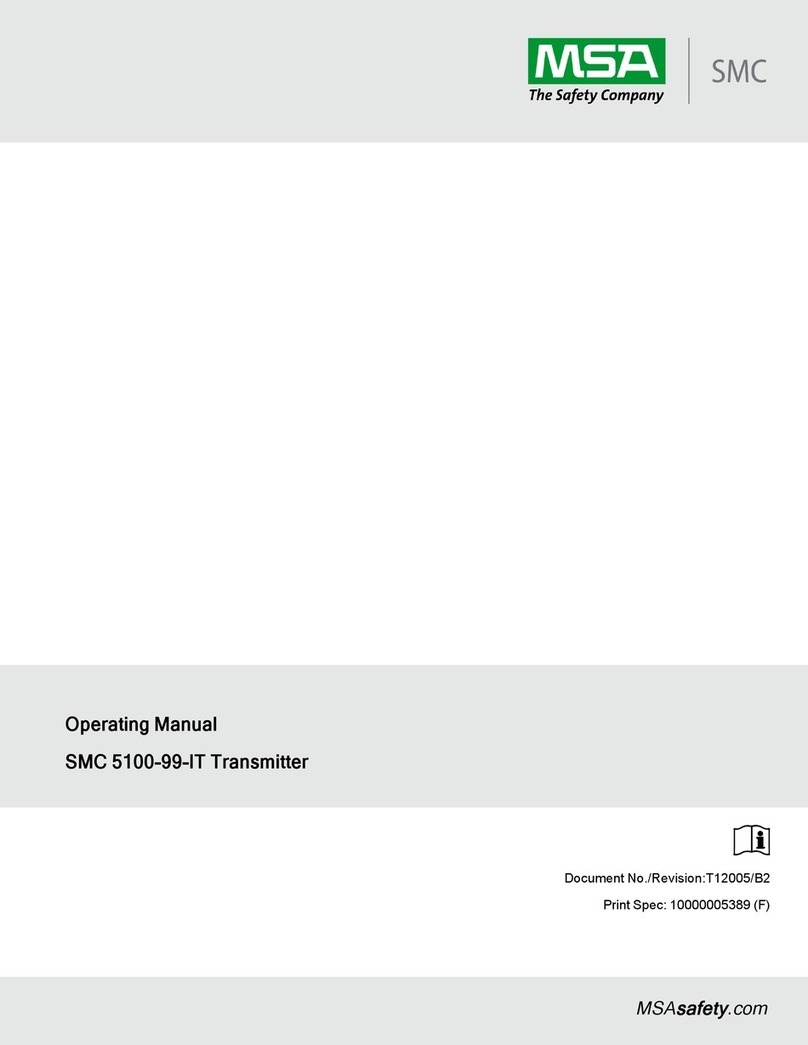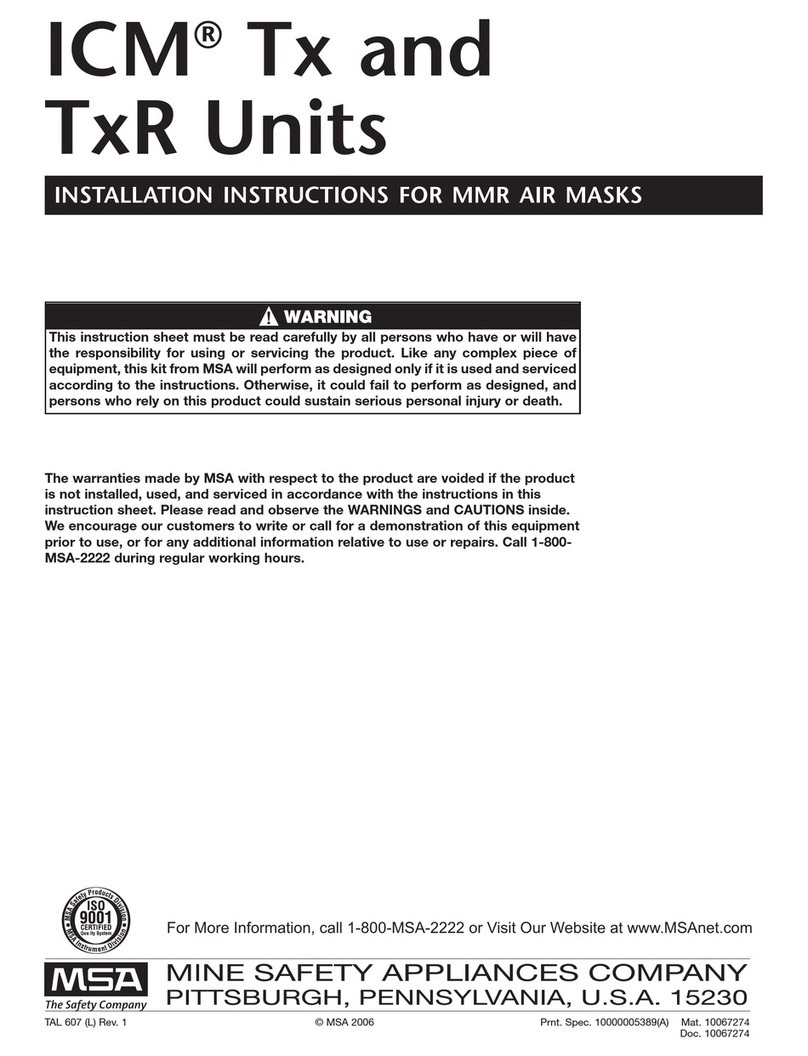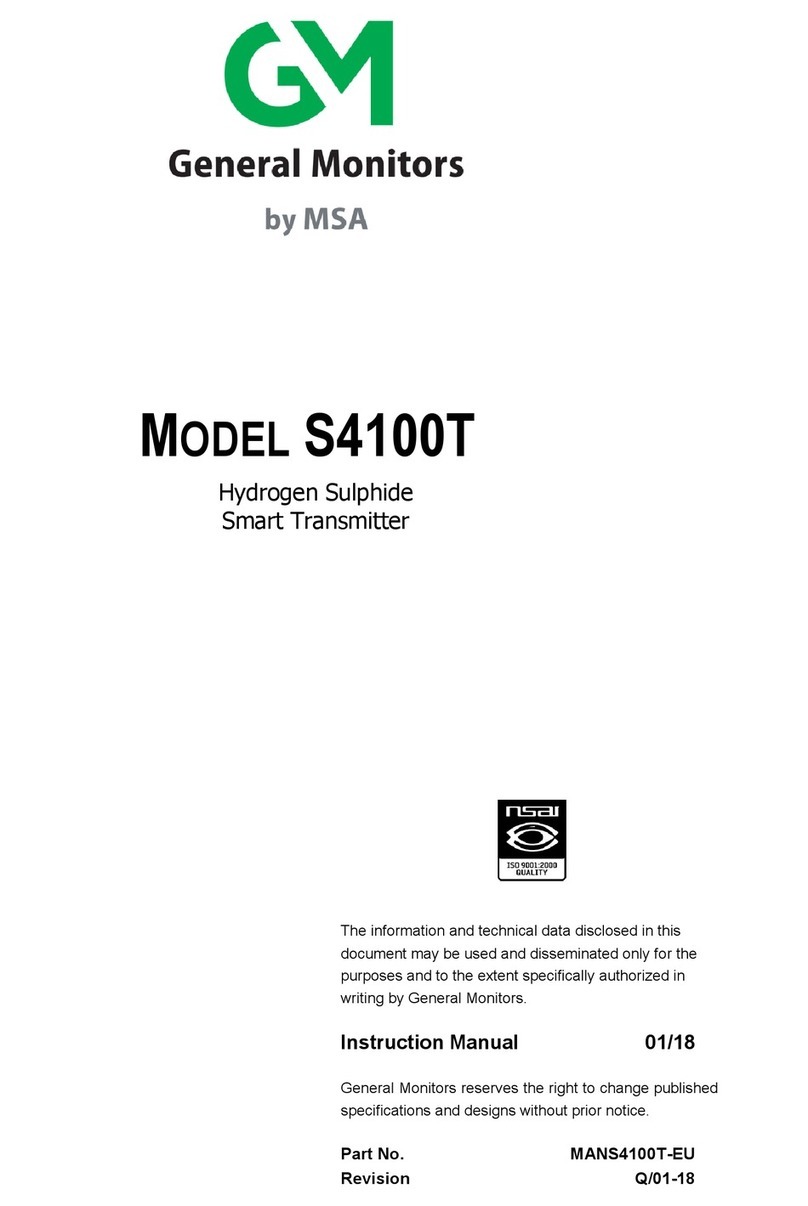
• The device must be installed with the sensor inlet pointing downwards to avoid clogging of the gas
inlet by particles or liquids.
• Electrochemical sensors are sealed units which contain a corrosive electrolyte. Should a sensor
develop leakage, it must be immediately removed from service and disposed of properly. Caution
must be exercised so that the electrolyte does not contact skin, clothing or circuitry otherwise
personal injury [burns] and/or equipment damage may result.
• The only absolute method to ensure proper overall operation of the device is to check it with a
known concentration of the gas for which it has been calibrated. Consequently, calibration checks
must be included as part of the routine inspection of the system.
• As with all devices of these types, high levels of, or long exposure to, certain compounds in the
tested atmosphere could contaminate the sensor. In atmospheres where the device may be
exposed to such materials, calibration must be performed frequently to ensure that the operation is
dependable and display indications are accurate.
• The device must not be painted. If painting is done in an area where a device is located, care must
be exercised to ensure that paint is not deposited on the sintered metal flashback arrestor in the gas
sensor inlet, if so equipped. Such paint deposits would interfere with the gas diffusion -process.
• To ensure proper function the device must be kept dry and free of any contaminants, e.g. dust
particles and water. Regular visual checks are recommended. Any contaminants must be removed
by blowing them off with clean, oil-free compressed air or with a dry brush. Ensure that the air
entrances are kept free from any coating, e.g. paint, grease or similar.
• Use only genuine MSA replacement parts when performing any maintenance procedures provided
in this manual. Failure to do so may seriously impair instrument performance. Repair or alteration of
the device, beyond the scope of these maintenance instructions or by anyone other than an autho-
rised MSA service personnel, could cause the product to fail to perform as designed.
• The device is designed for applications in hazardous areas under atmospheric conditions.
• For correct measurements, the combustible gas sensors require an oxygen concentration greater
than 10Vol%. Oxygen enriched atmospheres, greater then 21Vol%, can affect the measurement
and the electrical safety of the device.
• The response time of the device will be increased by significant dust deposits on the Sensor.
Checks for dust deposits must be done at regular intervals.
• Catalytic combustible gas sensors may produce low or zero response to combustible gas after
exposure to substances as Silicon, Silane, Silicate, Halide and compounds containing Fluorine,
Chlorine, Iodine or Bromine.
• Catalytic sensor: After exposure of gas above the measuring range, the sensor has to be
immediately calibrated / adjusted, independent of the calibration interval. In the case of an
adjustment the zero point and sensitivity of the sensor has to be rechecked again after 24 hours.
• In case of very high flammable concentrations >100%LEL the device is able to lock all outputs
[LOC]. This function shall be used for -standalone applications according to ATEX requirements.
• Catalytic sensor: If the PrimaX is operated in combination with a control unit and [LOC] is
deactivated on the PrimaX, the control unit has to ensure the latching after the measuring range was
exceeded.
• Catalytic sensor: Before a reset of an over range [LOC] indication is done it shall be verified that the
gas concentration is below full scale.
• Toxic gases: If the measuring range is exceeded, sensor life time can be reduced or the sensor
might need a recovery phase.
• Used sensors have to be disposed of in an environmentally compatible way.
• At signal underrange (see chapter 10.1 Output States) the 4 - 20 mA output is set to 3.8 mA (or 2.0
mA) and "LO" (alternately Measure Value if suppressing negative values in M-14 is set to "OFF")
shown on the display. To avoid a delayed alarm activation, a calibration should be done when the
output current is set to 3.8 mA and "LO" is shown on the display persistently.
• The lowest range which is suitable for the alarm thresholds should be selected for toxic gases.
7 PrimaX GB
1 Safety Regulations






